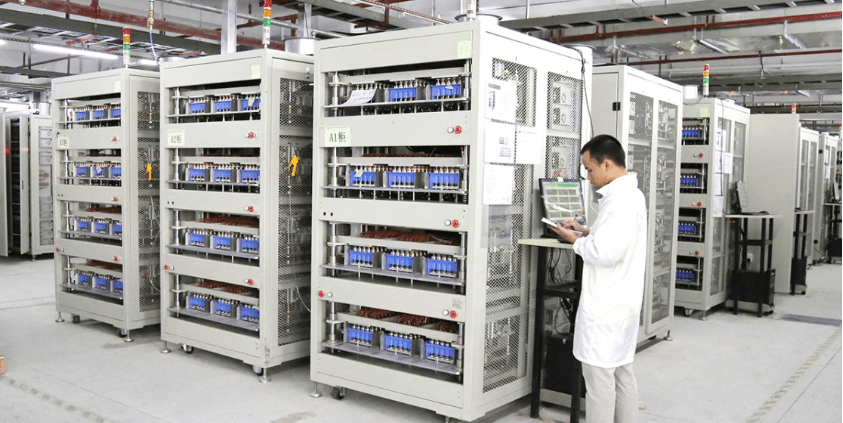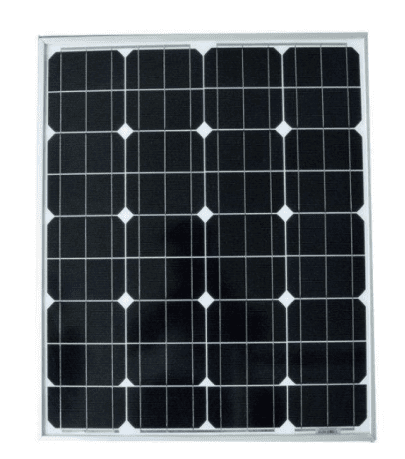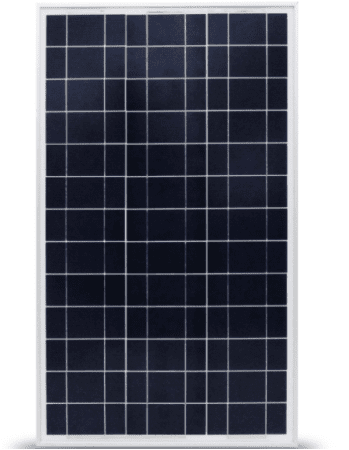Li-ion Battery Basic Knowledge for Solar Street light Battery Pack
(1) Composition of Li-ion battery
Li-ion battery is mainly composed of two parts: battery cell and a protection board PCM (power battery is generally called battery management system BMS). The Li-ion Battery cell is the heart of Li-ion battery, and the management system is equivalent to the brain of a Li-ion battery.
The core is mainly composed of positive electrode material, negative electrode material, an electrolyte, a diaphragm, and a shell. The protection plate is mainly composed of protection chip (or management chip), MOS tube, resistance, capacitance, and a PCB board.
(2) Advantages and disadvantages of Li-ion battery
Li-ion battery has many advantages, such as high voltage platform, high energy density (lightweight, small volume), long service life, and environmental protection.
The disadvantage of lithium battery is that the price is relatively high, the temperature range is relatively narrow, and there are certain security risks (need to add protection system).
| Comparison parameters of various batteries | Lead-acid battery | Nickel-cadmium battery (Ni-Cd) |
Nickel metal hydride battery (Ni-MH) |
lithium battery |
| Nominal voltage
(V) |
2 | 1.2 | 1.2 | 3.2/3.6/3.7 |
| Weight energy density
(WH / kg) |
25~30 | 40~45 | 60~65 | 120~200 |
| Volume energy density
(WH / L) |
65~80 | 150~180 | 300~350 | 350~400 |
| Optimum working temperature (℃) | -40~70 | -20~60 | -20~45 | 0~45 |
| Environment friendly | lead pollution | Cadmium
pollution |
/ | / |
| Recycle
(times) |
200~300 | 500 | 1000 | 500~1500 |
| Cost
(RMB/Wh) |
0.6~1.0 | 2.0~2.6 | 2.5~3.8 | 2.0~3.5 |
| Charger cost | Low (Stabilizedvoltage source) |
General (Constant current source) |
General
(Constant current source) |
High (Constant current and pressure) |
(3) Li-ion Battery classification
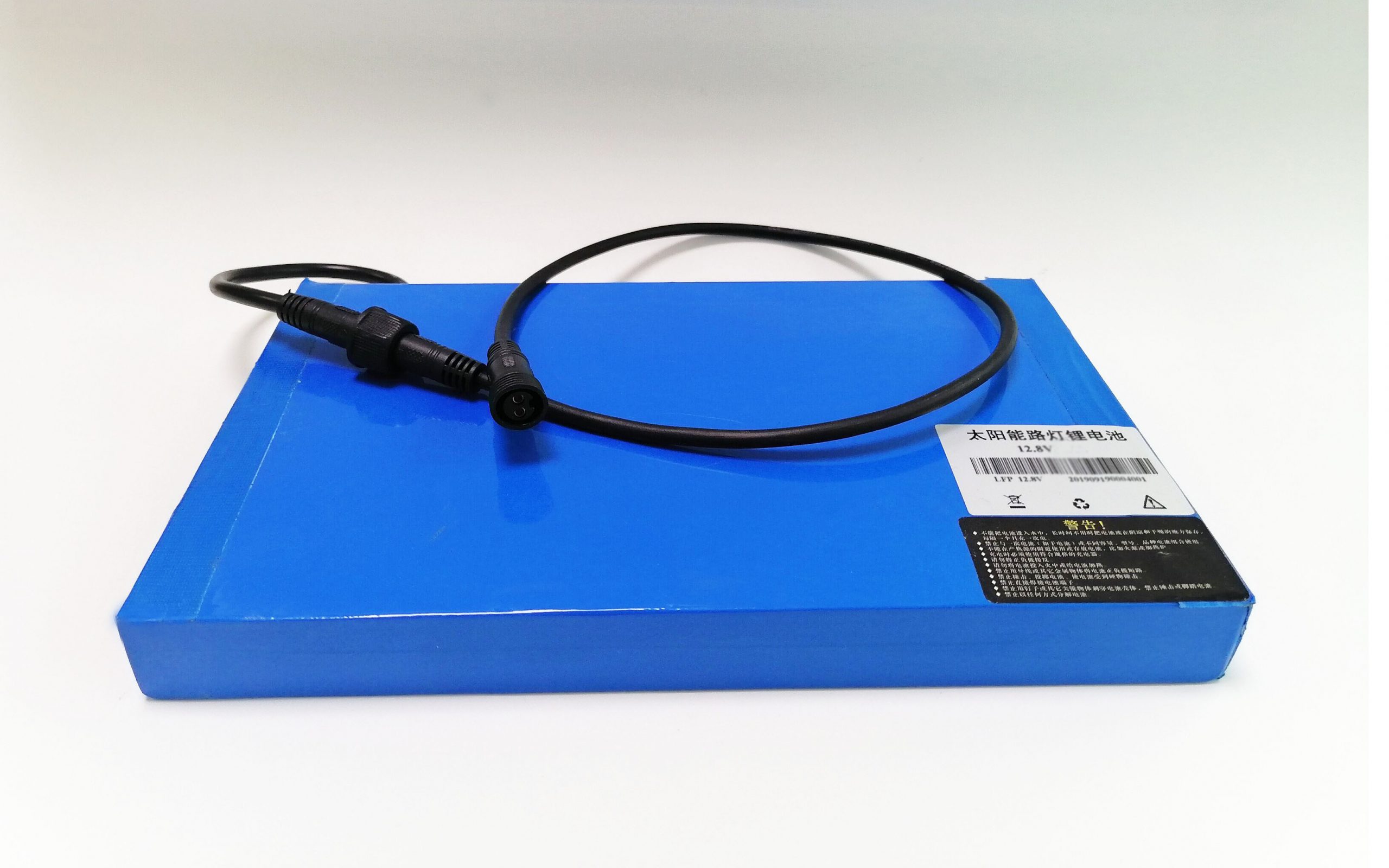
Lithium batteries can be divided into two categories: disposable non-rechargeable batteries and rechargeable batteries (also known as a battery).
Non-rechargeable batteries such as lithium manganese dioxide batteries, lithium sulfimide batteries.
Rechargeable batteries can be divided into the following categories according to different situations.
- According to appearance: square lithium battery (such as ordinary mobile phone battery) and cylindrical lithium battery (such as 18650 of electric tools);
- According to the outsourcing materials: aluminum shell lithium battery, steel shell lithium battery, and soft bag battery.
- According to the cathode materials, lithium cobaltic acid (LiCoO2), lithium manganate (LiMn2O4), lithium ternary (linixcoymnzo2), and lithium iron phosphate (LiFePO4);
- According to the state of electrolyte: lithium-ion battery (LIB) and polymer battery (PLB);
- According to usage: general battery and power battery.
- According to performance characteristics: high capacity battery, high-rate battery, high-temperature battery, low-temperature battery, etc.
(4) Explanation of common terms
- Capacity
It refers to the amount of electricity that can be obtained from lithium battery under certain discharge conditions.
We know in high school physics that the formula of electric quantity is q = I * t, the unit is Coulomb, and the unit of battery capacity is specified as Ah (ampere-hour) or mAh (milliampere-hour). This means that a battery of 1Ah can be discharged for 1 hour with a current of 1A when it is fully charged.
In the past, the battery of Nokia’s old mobile phone (like bl-5c) was generally 500mah. Now, the current smartphone battery is 800-1900mah, the battery of the electric bicycle is generally 10-20ah, and the battery of the electric vehicles is generally 20-200ah.
- Charge rate / discharge rate
It indicates how much current is used for charging and discharging. It is generally calculated by the multiple of the nominal capacity of the battery, which is generally called “several C”.
For a battery with a capacity of 1500mah, 1c = 1500mah is specified. If discharging at 2c,it means discharging at 3000ma current. Charging and discharging at 0.1c means it is charging and discharging at 150mA current.
- Voltage (OCV: open circuit voltage)
The battery voltage generally refers to the nominal voltage of lithium battery (also known as rated voltage). The nominal voltage of ordinary lithium battery is generally 3.7V, we also call its voltage platform 3.7V. When we say voltage, we generally mean the open-circuit voltage of the battery.
When the capacity of the battery is 20-80%, the voltage is concentrated around 3.7V (3.6-3.9v), when the capacity is too high or too low, and the voltage changes greatly.
- Energy/power
When the battery is discharged according to a certain standard, the energy (E) that the battery can discharge is Wh (watt-hour) or kWh (kilowatt-hour), and 1kwh = 1-kilowatt hour.
The physics book has a basic concept, e = u * I * t, which is also equal to the battery voltage times the battery capacity.
The formula of power is p = u * I = E / T, which represents the energy that can be released per unit time. The unit is w (W) or kW (kW).
For a battery with a capacity of 1500mah, the nominal voltage is generally 3.7V, so the corresponding energy is 5.55wh.
- Resistance
Since charging and discharging cannot be equivalent to an ideal power supply because of certain internal resistance. The internal resistance consumes energy. The smaller the internal resistance, the better it is.
The unit of battery internal resistance is milliohm (m Ω).
Generally, the internal resistance of a battery consists of ohmic internal resistance and a polarized internal resistance. The size of the internal resistance is affected by the material, manufacturing process and the structure of the battery.
- Cycle life
Once the battery is charged and discharged, it is called a cycle, and the cycle life is an important indicator to measure the battery life performance.
According to IEC standard, the lithium battery of the mobile phone shall be discharged to 3.0V at 0.2C and charged to 4.2V at 1C. The battery capacity shall be maintained above 60% of the initial capacity after 500 cycles. In other words, the cycle life of lithium battery is 500 times.
According to the national standard, the capacity shall remain at 70% of the initial capacity after 300 cycles.
If the battery capacity is less than 60% of the initial capacity, it is generally considered to be scrapped.
- DOD: depth of discharger
It is defined as the percentage of the rated capacity released by the battery.
Generally, the deeper the discharge depth is, the shorter the battery life is.
- Cut off voltage
The termination voltage is divided into charging termination voltage and discharging termination voltage, that is, the voltage at which the battery cannot continue to be charged or discharged. If the battery is continued to be charged or discharged at the termination voltage, the battery life is going to be greatly affected.
The charge-discharge termination voltage of lithium battery is 4.2V and 3.0V respectively.
It is strictly prohibited to charge or discharge lithium batteries beyond the termination voltage.
- Self-discharge
It refers to the rate of decrease in capacity duri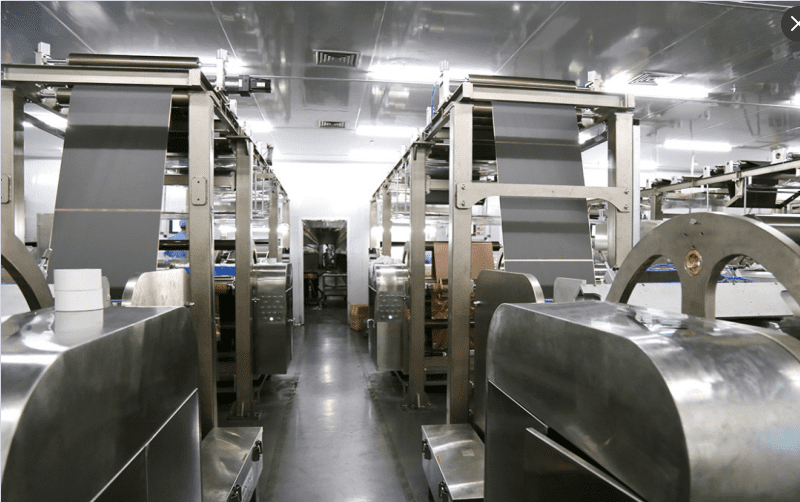 ng storage, expressed as the percentage of capacity decrease per unit time.
ng storage, expressed as the percentage of capacity decrease per unit time.
The self-discharge rate of general lithium battery is 2% ~ 9% / month.
- SOC (State of Charge)
This refers to the percentage of the remaining power of the battery and the total power that can be discharged, 0 ~ 100%. Reflect the remaining battery power.
(5) Li-ion Battery naming rules
Different battery manufacturers have different naming rules, but we all follow a unified standard for general batteries. The size of the battery can be known according to the name of the battery
According to IEC61960, the rules for cylindrical and square batteries are as follows:
- Cylindrical battery, 3 letters followed by 5 numbers,
Three letters, the first letter represents the negative electrode material, I means there is a built-in lithium-ion, L represents the lithium metal or lithium alloy electrode. The second letter indicates the positive electrode material, C indicates cobalt, n indicates nickel, m indicates manganese, and V indicates vanadium. The third letter is R for a cylinder.5 digits, the first 2 digits represent the diameter, the last 3 digits represent the height, all in mm.
- Square battery, 6 digits after 3 letters,
Three letters. The first two letters have the same meaning as a cylinder. The last one is p, which means square.
There are six digits, the first two digits indicate the thickness, the middle indicates the width, the last two indicate the height (length), the unit is also mm.
For example, ICR 18650 is a universal 18650 cylindrical battery with a diameter of 18mm and a height of 65mm;
ICP 053353 is a square battery with a thickness of 5mm, a width of 33mm, and a height (length) of 53mm.
(6) Li-ion Battery technology
There are some differences in the process flow of different batteries and different manufacturers, and the detailed process flow will be very complex. The basic process flow, the process flow of cell manufacturing and the process flow of pack manufacturing are listed below.
The production process of an electric cell mainly includes pole piece manufacturing, electric cell manufacturing, battery assembly, liquid injection, chemical formation, separation, and other processes.
From batching to winding, the positive and negative electrodes are made in different workshops at the same time. After the positive and negative electrodes are made, the subsequent processes are done together. Different QA links of quality inspection will be inserted in the middle.
(7) Group and series-parallel connection of Li-ion Battery
In different fields, the requirements for batteries are different. The system has some special requirements for voltage, capacity, internal resistance, etc. often a single battery cannot meet the requirements, it needs to be connected in series and parallel to supply power to the outside.
The performance of batteries in series and in parallel is determined by the performance of the worst battery, which is often referred to as the “barrel principle”. Therefore, the most important point of battery grouping is the consistency of battery performance parameters.
For example, a notebook, electric bicycle, electric vehicle, energy storage system, etc. all need to consider the series and parallel connection of the batteries to form a battery pack.
The battery voltage of the notebook is generally 11.1v or 14.8V, mainly 18650 batteries, so it is generally 2 series and 3 parallel or 2 series and 4 parallel.
Apple iPad is three polymer batteries connected in parallel, with a capacity of about 25wh.
The electric bicycle and electric motorcycle systems are generally 24V, 36V, 48V, 60V, and 72V systems. See the following table for specific group conditions (s represents a series connection).
Pure electric vehicles and hybrid electric vehicles (EV / PHEV) have a higher voltage, about 250 ~ 500V, and the maximum voltage will be more than 150 knots connected in series.
In addition, there are many things to be considered in the grouping of batteries in a series-parallel connection, such as the consistency of the battery voltage platform, the consistency of the battery capacity, the consistency of the internal resistance of the battery, etc.
The consistency of battery parameters after a series-parallel connection has a great influence on the performance and life of the battery.
| Battery pack voltage | Lithium manganate / ternary lithium | Lithium iron phosphate |
| 12V | 4S | 4S |
| 18V | 5S | 6S |
| 24V | 7S | 8S |
| 36V | 10S | 12S |
| 48V | 13S | 15S/16S |
| 60V | 16S | 19S |
| 64V | 18S | 20S |
| 72V | 20S | 23S |
8) Comparison of various power batteries
Power battery is mainly considered in terms of its application, mainly used in electric vehicles, electric bicycles, electric tools and so on.
The power battery is different from an ordinary battery, but it has some special characteristics
- Series and parallel connection of batteries
- The battery has a larger capacity
- The discharge rate of the battery is high (hybrid power and electric tools)
- The battery has higher safety requirements
- The battery has a wide operating temperature range
- The service life of the battery is long, generally 5-10 years
Due to the particularity of the power battery, there are some differences in its process and materials. According to the situation of positive electrode materials, it is mainly divided into lithium manganate (LiMn2O4), lithium ternary (linixcoymnzo2), lithium iron phosphate (LiFePO4), etc. its voltage platform, energy density, price, safety, etc. all have certain differences. See the comparison in the table below for details:
(lithium cobaltite is rarely used as power battery due to its poor stability and high price, which is listed and compared in the table below)
| Items | Specification | cobalt acid lithium | Ternary lithium | Manganate lithium | Lithium iron phosphate |
| 1 | tapped density(g/cm3) | 2.8~3.0 | 2.0~2.3 | 2.2~2.4 | 1.0~1.4 |
| 2 | Specific surface area(m2/g) | 0.4~0.6 | 0.2~0.4 | 0.4~0.8 | 12~20 |
| 3 | Capacity density(Ah/kg) | 135~140 | 155~165 | 100~115 | 130~140 |
| 4 | Voltage platform(V) | 3.7 | 3.6 | 3.6 | 3.2 |
| 5 | Recycle times | >300 | >800 | >500 | >2000 |
| 6 | transition metal | Poor | Poor | Rich | Much rich |
| 7 | Material cost | Very high | High | Low | Low |
| 8 | Environment friendly | Cobalt | Containing nickel and cobalt | / | / |
| 9 | Safety | Poor | General | Good | Excellent |
| 10 | Application | Small battery | Small battery, Small power battery | Power battery | Power Battery, Super capacity power supply |
(9) Lithium battery model
In terms of electrical characteristics, the internal resistance of the battery is not completely equivalent to a resistor. For details, please refer to the foreign PNGV equivalent circuit model. As shown in the figure below.
The internal resistance of the battery is mainly composed of ohmic resistance R0 and polarization resistance R1, where C1 is the polarization capacitance.
There are two main test methods for battery internal resistance measurement in the industry. The DC discharge method and the AC injection method, which cannot be measured by the ordinary method of measuring resistance, but can only be measures by the special internal resistance measuring instrument.
The internal resistance of the battery is an important parameter reflecting the performance and life of the battery. When the cycle life of the battery approaches, the internal resistance of the battery increases sharply. The relationship between the number of cycles and the internal resistance is shown in the figure below.
10) Electrical characteristics and key parameters of Li-ion Battery
- The charge-discharge curve of the battery
The charge and discharge curve of lithium battery refers to the relationship curve between battery capacity and the open-circuit voltage. According to the discharge curve, the battery’s power can be roughly estimated, as shown in the figure below.
The charge-discharge curve of lithium battery is not only related to the charging and discharging current but also to the temperature. As shown in the figure below.
- Key parameters of the battery
Due to its own characteristics, lithium battery cannot be overcharged, over-discharge, over-current, or over temperature. Therefore, considering safety and battery life, the battery should be properly protected. There are several parameters that are often encountered, and they are listed in parallel. There is little difference in voltage between different manufacturers. However, there will be some differences between batteries with different operating temperatures, different discharge rates or different manufacturers.
| Comparison item | Manganate lithium/Ternary Lithium | Lithium iron phosphate |
| Voltage | 3.7V/3.6V | 3.2V |
| Cut-off charge voltage | 4.2V | 3.6V |
| Discharge Cut-off Voltage | 3.0V | 2.0V |
| Operation temperature | -20~60℃ | -10~65℃ |
| Maximum discharge rate | 3~10C | 3~10C |
11) Li-ion Battery protection and management requirements and systems
Due to the characteristics of lithium batteries, it is necessary to add a battery protection board (PCM) or a battery management system (BMS). Batteries without a protection board or management system are prohibited to use, and there will be huge safety risks. Safety is always the first priority for battery systems.
If the battery is not well protected or managed, there may be a risk of a shortened life, damage, or explosion.
The PCM (power circuit module) is mainly used in consumer products such as mobile phones and notebooks.
Battery management system (BMS) is mainly used in power batteries, such as electric vehicles, electric bicycles, energy storage, and other large-scale systems.
The main functions of PCM include OVP, UVP, OTP, OCP, etc. In case of any abnormality, the system will cut off automatically to ensure the safety of the system.
The battery protection system technology is very mature, there are many related board factories, mainly concentrated in South China. And there are special IC manufacturers providing special lithium battery protection chips. This piece is relatively mature, and there are many mature protection IC chips in China.
In addition to the basic protection functions of the protection system, the main functions of the battery management system (BMS) include battery voltage, temperature, and current measurement, energy balance, SOC calculation and display, abnormal alarm, charge and discharge management, communication, etc. Some BMS systems also integrate heat management, battery heating, battery health status (soh) analysis, insulation resistance measurement, etc.
Introduction and analysis of BMS function:
- Battery protection is similar to PCM, which includes overcharge, over-discharge, over-temperature, over current, and short circuit protection. Like ordinary lithium manganese battery and ternary lithium battery, once the voltage of any battery exceeds 4.2V or the voltage of any battery falls lower than 3.0V, the system will automatically cut off the charging or discharging circuit. If the temperature of the battery exceeds the working temperature of the battery or the current is greater than the discharge current of the battery, the system will automatically cut off the current path to ensure the safety of the battery and the system.
- Energy balance of the whole battery pack after working for a certain period of time will show great differences that could be, due to having many batteries in series, due to the inconsistency of the cell itself, the inconsistency of working temperature or other reasons., This has a great impact on the life of the battery and the use of the system. Energy balance is to make up for the differences between individual cells to do some active or passive charge or discharge management to ensure battery consistency and prolong battery life.
There are two kinds of methods in the industry: passive equalization and active equalization. Passive equalization is mainly to balance the amount of power that is consumed by resistance. The active equalization is mainly to transfer the power of batteries with more power to less powerful batteries through capacitance, inductance or transformer. The comparison of passive and active equalization is shown in the table below.
Because the active equilibrium system is relatively complex and the cost is relatively high, the mainstream is still passive equilibrium.
| Comparison item | Passive equilibrium | Active equilibrium |
| Equilibrium mode | Resistance consumption | Inductive equivalent transfer |
| Equilibrium efficiency | Low | High |
| Program maturity | mature | More Mature |
| System complexity | Low | High |
| System cost | LOW | High |
- SOC calculation, battery power calculation is a very important part of BMS, many systems need to know the remaining power more accurately. Due to the development of technology, there are many methods for SoC calculation. If the accuracy requirements are not high, the residual power can be judged according to the battery voltage. The main and accurate methods are the current integration method (also called ah method), q = ∫ I DT, internal resistance method, neural network method, Kalman filter method, etc. The current mainstream in the industry is still the current scoring method.
- Communication. Different systems have different requirements for communication interfaces. The mainstream communication interfaces are SPI, I2C, can, RS485, etc. The automobile and energy storage systems are mainly can and RS485.
Due to the insufficient competition and the complexity of the BMS system, there are relatively few system manufacturers. The related chip manufacturers are mainly European and American manufacturers, and there are a few large companies in China as well. There are many opportunities in the future.
I hope that I can send an email to communicate with you about the technology, products, and manufacturers in BMS.
(12) Li-ion Battery charging requirements and systems
The mainstream charging method of lithium battery is constant current and constant voltage (CC / CV): constant current – constant voltage. The constant current if charged first and then the constant voltage is charged after reaching a certain potential.. A good charger can also trickle according to the battery voltage state. Some systems also add pulse charging mode in the back and set the end of charging according to the time.
General chargers integrate functions such as current limiting, voltage limiting, overvoltage protection, overcurrent protection, overtemperature protection, and anti-reverse connection. The specific charging system is shown in the figure below.
In addition, the charger charging is usually combined with PCM or BMS to do energy balance in the constant voltage charging stage.
For an ordinary lithium cobalt oxide battery, if the battery voltage is lower than 3.0V, the charger will start trickle charging (about 0.1C) to avoid damage to the battery. When the battery voltage is charged to 3.0V, it is changed to constant current charging (about 1C, the current depends on the system). It is detected that the battery voltage is converted to constant voltage charging when the battery voltage reaches 4.1V. When the battery current drops to about 0.1C, the charging is completed, and the charging system and the charging circuit are closed. The charging curve is shown in the figure below.
According to the different power, the charger adopts different control technology. The linear power supply is the main scheme for low power, and the switching power supply is the main scheme for high power. Charger technology has been quite mature, charger performance and efficiency are basically able to reach a relatively good level. There are many related manufacturers. The main technologies involved in the charger are mainly power supply technology and battery technology. The related manufacturers have also done power supply manufacturing before.
(13) Application fields of lithium batteries
Batteries are mainly used in consumer products, digital products, power products, medical and security.
| Motive power | Consumer Electronics | Digital | Health care | Security | Electrothermal | Others |
| electric automobile | Mobile phone | Digital camera | Palm electrocardiograph | Fire Emergency Light | Warm clothing | Electronic menu |
| Electric bicycle | Notebook | Digital vidicon | vital signs monitor | Security camera | Heating cloths | Electric shaver |
| Electric motorcycle | Tablet PC | Bluetooth headset | A portable ultrasonic diagnostic instrument | POS machine | Handwarmer | Wireless charging |
| Energy storage system | Netbooks | Wireless mouse | Portable oximeter | Wireless call | Heated insole | Military equipment |
| Backup power ups | MID | Bluetooth Keyboard | Portable fetal sound monitor | Wireless doorbell | Warm gloves | Well detection |
| Electric tool | GPS | Car kit | Laser treatment instrument | Entrance guard system | searchlight | |
| model airplane | E-book | LED flashlight | Wireless electronic medical | fingerprint identification | LED Screen | |
| Wireless speaker | Endoscope | RFID monitoring | LED Solar Street Light | |||
| Eyecare | Zig Bee anti-theft | |||||
| Physiotherapy products |

